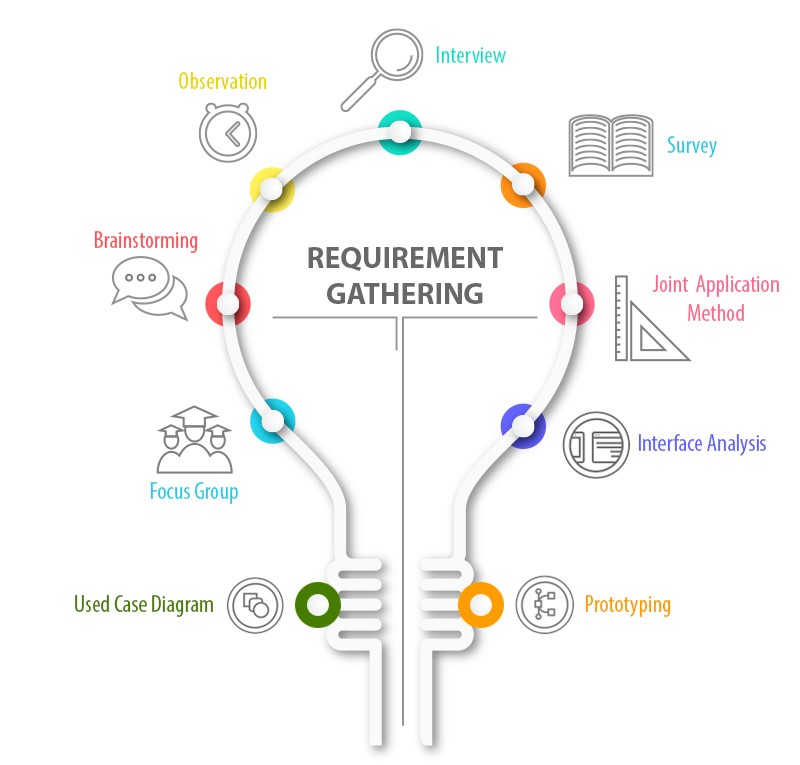Requirements in the Software Development Life Cycle (SDLC): The First Phase
 King AJ
King AJ
In our last article, we uncovered the hidden costs of technical debt and why the Software Development Life Cycle (SDLC) is crucial to avoid these pitfalls. Today, let's dig deeper into the SDLC, starting with the all-important first phase: Requirements. This phase is vital because it ensures that the final product meets the needs of its users and stakeholders.
Requirements: The Foundation of SDLC
In the Software Development Life Cycle (SDLC), the requirements phase sets the stage for everything that follows. It's about identifying, analyzing, documenting, and validating the needs to ensure the final product hits the mark. Let's break down the key elements of this phase, like assumptions, functional and non-functional requirements, specifications, and the WRSPM model, using the example of building an e-commerce app like Amazon.
Assumptions
Assumptions are the initial expectations or conditions we take as true without verification in the project's early stages. They guide planning and decision-making but need regular validation. Key assumptions might include:
Availability of Stakeholders: Our stakeholders, like product owners and user reps, will be available for crucial consultations and feedback.
Technological Environment: The technological environment, including servers and development tools, will remain stable or change predictably.
Resource Availability: Team members and necessary tools will be available as planned.
Project Scope: The scope defined initially, such as offering a product catalog and shopping cart, will not undergo significant changes.
Documenting and revisiting these assumptions regularly helps mitigate risks associated with their potential invalidity.
Requirements
Requirements fall into two main types: functional and non-functional.
Functional Requirements
Functional requirements are the core functions our system needs to perform. For an e-commerce app like Amazon, these include:
User Interfaces: Our app must have a user-friendly interface on both mobile and web platforms.
Data Management: Users should seamlessly create, read, update, and delete their profiles and orders.
Authentication: Secure user access is a must, with features like login, logout, and password recovery.
Product Search and Filter: Users should easily search for products and filter results by price, brand, and rating criteria.
Checkout Process: A smooth checkout process with payment gateway integration and order confirmation.
Non-Functional Requirements
Non-functional requirements specify criteria that judge the system's operation rather than specific behaviors. For our e-commerce app, these include:
Performance: The app should effortlessly handle up to 10,000 simultaneous users.
Reliability: We aim for an impressive uptime of 99.9%.
Scalability: Our app should grow gracefully, accommodating more users and products without a hitch.
Usability: Intuitive and user-friendly, our app should require minimal training.
Security: Compliance with industry security standards, like PCI-DSS, to protect sensitive user data.
Both functional and non-functional requirements are crucial for a comprehensive understanding of what the system must achieve and how it must perform.
Specifications
Specifications translate our requirements into a detailed blueprint. They guide designers, developers, and testers, ensuring everyone is on the same page. For our e-commerce app, a solid specification document includes:
System Overview: A high-level description of our app’s purpose, such as creating an online marketplace.
Functional Specifications: Detailed breakdowns of each function, like product listing and user authentication.
Data Specifications: Comprehensive data inputs, outputs, and storage details, including database schemas.
Interface Specifications: How our app will interact with users and other systems, like APIs for payment gateways.
Performance Specifications: Specific criteria for system performance, such as response times.
Security Specifications: Protocols to ensure data integrity and security, like encryption and access controls.
Specifications act as a contractual agreement between stakeholders and the development team, ensuring all parties understand what the system will deliver.
WRSPM Model
The WRSPM (World, Requirements, Specifications, Programs, and Machines) model is a framework that aids in understanding and structuring requirements within the SDLC. Each component represents a different aspect of system development:
World: The real-world context in which the system will operate. For our e-commerce app, this includes the market, competitors, and user demographics.
Requirements: The app must exhibit desired properties and behaviors to meet stakeholders' needs, such as a robust search functionality and secure payment processing.
Specifications: The detailed description of the app's functionality and constraints, including user interface designs and database structures.
Programs: The actual code and software components that implement the specifications, such as front-end and back-end development.
Machines: The hardware and infrastructure that support the app, including servers and network configurations.
Using the WRSPM Model in the Requirements Phase
Understanding the World: Begin by analyzing the environment in which the app will operate. This involves understanding the e-commerce domain, identifying stakeholders like customers and vendors, and determining their needs and constraints.
Eliciting Requirements: Engage with stakeholders to gather and document functional and non-functional requirements. Ensure the requirements are clear, concise, and testable.
Developing Specifications: Translate requirements into detailed specifications. Use models and diagrams to represent system behavior and interactions.
Planning Programs and Machines: While primarily focused on requirements and specifications, consider the early implications for programs (software) and machines (hardware). This helps ensure feasibility and alignment with the overall system architecture.
The WRSPM model provides a structured approach to managing the complexities of requirements, ensuring that all aspects of the system are thoroughly considered and integrated. There's more to the WRSPM model and how it can be utilized in the requirement phase of the SDLC, you can learn more here.
Conclusion
The requirements phase is critical in the SDLC as it lays the groundwork for successful system development. By making informed assumptions, clearly defining functional and non-functional requirements, and developing precise specifications, teams can align their efforts with stakeholders' needs. The WRSPM model further enhances this process by offering a comprehensive framework for understanding and structuring requirements. Properly executed, the requirements phase ensures that the final product is both functional and efficient, meeting the expectations of all stakeholders involved.
This is what I learned and couldn't wait to share with you! Grasping the importance of the requirements phase in the SDLC can truly transform your software projects for the better. Don't miss out on the next Daily Dev Dive, where we'll dive into the design phase and uncover how it helps us dodge technical debt while crafting top-notch software solutions. Stay tuned!
Subscribe to my newsletter
Read articles from King AJ directly inside your inbox. Subscribe to the newsletter, and don't miss out.
Written by

King AJ
King AJ
I am a web developer and technical writer with a passion for creating dynamic and engaging web applications. I specialize in utilizing cutting-edge technologies such as Node.js, React, and Laravel to create custom web solutions that drive results. In addition to my web development skills, I am also a skilled technical writer. I can help you create compelling and informative content for your website or blog that will engage your audience and drive traffic to your site.